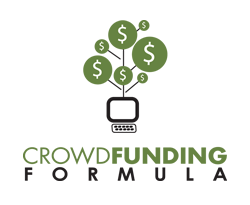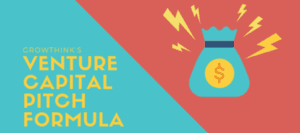Welcome to our in-depth analysis of crowdfunding, a popular fundraising method that has gained immense popularity in recent years. In this article, we will explore the pros and cons of crowdfunding, offering you a detailed perspective on this innovative approach to financing businesses, projects and ventures. Our goal is to provide you with valuable insights that will help you make informed decisions about whether crowdfunding is the right fit for your fundraising needs.
What is Crowdfunding?
Crowdfunding is a collective funding model that allows individuals, entrepreneurs, and businesses to raise funds for their projects or ventures from a large number of people, typically through online platforms. It is a democratized way of financing, where small contributions from many individuals add up to reach the funding target.
Types of Crowdfunding
The different types of crowdfunding are:-
– Rewards-Based Crowdfunding:
Rewards-Based Crowdfunding is a type of crowdfunding where individuals or businesses raise funds for a project, product, or venture by offering rewards or incentives to backers who contribute money.
It is a popular method used by entrepreneurs, artists, and creative individuals to finance their initiatives. This type of crowdfunding offers backers non-monetary rewards, such as products, services, or experiences, in exchange for their contributions.
– Equity-Based Crowdfunding:
Equity-Based Crowdfunding is a type of crowdfunding where individuals or businesses raise funds for their projects, ventures, or startups by offering equity or ownership stakes to investors in exchange for their financial contributions.
In this model, investors receive a share of the company’s ownership in exchange for their financial support.
– Donation-Based Crowdfunding:
Donation-Based Crowdfunding is a type of crowdfunding where individuals or organizations raise funds for a charitable cause or a specific project by soliciting donations from the public.
In this model, contributors willingly give money to support a cause they believe in, but they do not expect any financial return or rewards in exchange for their donations.
– Debt-Based Crowdfunding:
Debt-Based Crowdfunding, also known as Peer-to-Peer (P2P) Lending or Marketplace Lending, is a type of crowdfunding where individuals or businesses borrow money from a pool of investors through online platforms.
In this model, the borrowers are seeking loans to finance their projects, personal needs, or business ventures, and the investors provide the funds to the borrowers with the expectation of receiving repayment with interest over time.
Crowdfunding Pros and Advantages
– Access to Capital:
Crowdfunding provides access to a vast pool of potential investors, allowing individuals and businesses to raise funds without relying on traditional sources like banks or venture capitalists.
Market Validation:
A successful crowdfunding campaign can validate the demand for a product or service, giving creators confidence that there is a market for their idea.
– Building a Community:
Crowdfunding allows creators to connect directly with their backers, fostering a sense of community and loyalty around the project.
Early Adopters and Advocates:
Backers of crowdfunding campaigns often become early adopters of the product or service and may act as advocates, helping to spread the word and attract more customers.
– Media and Publicity:
A well-executed crowdfunding campaign can attract media attention, leading to additional exposure and potential opportunities.
– Flexible Funding Options:
Some crowdfunding platforms offer flexible funding, meaning you receive the funds even if you don’t reach your entire fundraising goal, giving you access to some capital to work with.
Crowdfunding Cons and Disadvantages
– No Guarantee of Success:
Crowdfunding campaigns can fail to meet their funding goals, wasting the effort put into the campaign and leaving the creator without the required funds.
– Time-Consuming and Resource-Intensive:
Running a crowdfunding campaign requires significant effort in creating compelling content, promoting the campaign, and engaging with backers.
– Platform Fees:
Crowdfunding platforms charge fees for their services, which can eat into the funds raised.
– Public Scrutiny:
Crowdfunding campaigns are open to the public, making them vulnerable to criticism, and negative comments, which can affect the reputation of the creator.
– Intellectual Property Risks:
Presenting an idea on a crowdfunding platform exposes it to potential intellectual property theft or copycat projects.
– Legal and Regulatory Challenges:
Crowdfunding may involve legal and regulatory complexities that creators need to navigate, especially when offering equity or rewards.
– Delivery Challenges:
Fulfilling promises made during the campaign, such as delivering rewards, can be logistically challenging, leading to delays and dissatisfaction among backers.
In conclusion, while crowdfunding can be a powerful tool for raising capital and engaging with a supportive community, it requires careful planning, dedication, and a strong understanding of the potential challenges involved. So, if you need funding, and have the ability to quickly turn the funding into a viable product or service, then you should learn how to raise Crowdfunding, raise it, and start building your business today.
How to Get Funded in 90 Days or Less
If you need funding fast, you have to use Crowdfunding.

1. It’s fast. You’ll get the money in just 90 days or less.
2. It’s easy. You don’t even need a business plan – you can get started right away.
3. You keep ALL the money. It’s not debt, and you don’t you don’t give up any ownership in your company either…


 How to Create an Elevator Pitch with Template
How to Create an Elevator Pitch with Template Ultimate Guide to Business Startup Funding
Ultimate Guide to Business Startup Funding Ultimate Guide to Getting Venture Funding for Your Business
Ultimate Guide to Getting Venture Funding for Your Business How to Write an Investor Pitch Deck with Template
How to Write an Investor Pitch Deck with Template Growthink’s Ultimate Venture Capital Pitch Template
Growthink’s Ultimate Venture Capital Pitch Template How to Write a VC Business Plan with Template
How to Write a VC Business Plan with Template Ultimate Guide to Find Angel Investors
Ultimate Guide to Find Angel Investors Download a Free Business Plan Template
Download a Free Business Plan Template How to Make a Successful Business Plan
How to Make a Successful Business Plan